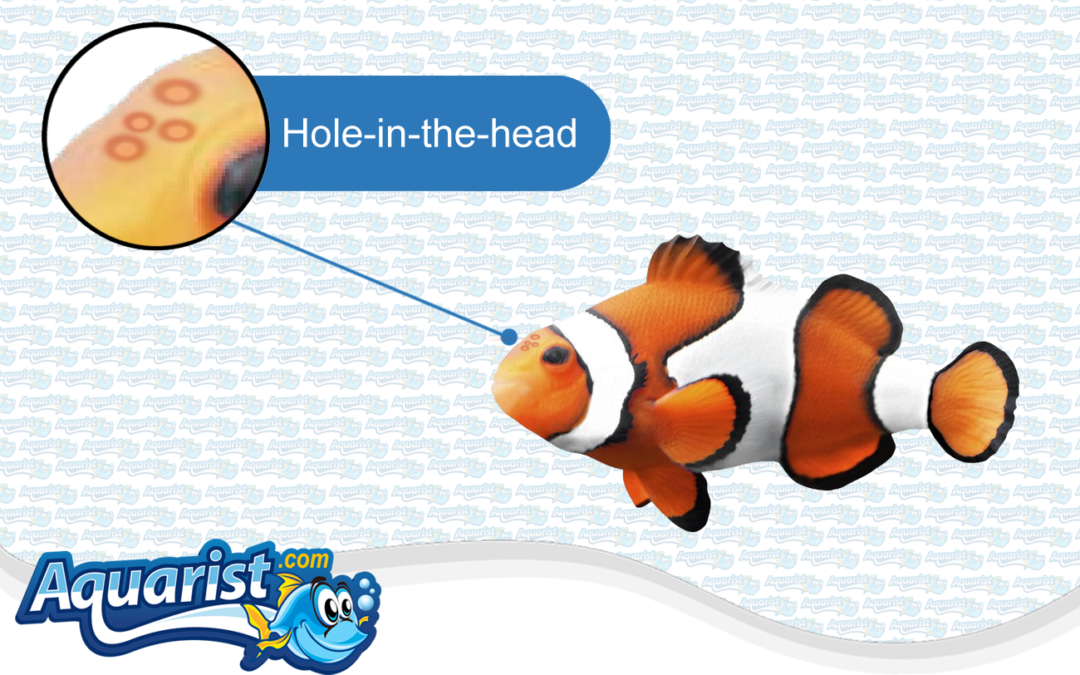Comprehensive Guide to Saltwater Fish Disease: Hole-in-the-Head (HITH)
Hole-in-the-Head Disease (HITH), also known as Head and Lateral Line Erosion (HLLE), is a condition that affects saltwater fish, characterized by pitted lesions or holes on the head and along the lateral line. This disease can lead to significant tissue damage and secondary infections if not treated. Understanding the causes, symptoms, treatment options, and preventive measures is essential for keeping your saltwater fish healthy. This guide provides a detailed overview of HITH, including how to recognize and manage the disease effectively.
What is Hole-in-the-Head Disease?
Hole-in-the-Head Disease is a condition where lesions or pits form on the head, face, or lateral line of fish. It is common in both freshwater and saltwater species, but in saltwater fish, it is often associated with poor water quality, improper diet, or the use of activated carbon. The disease progresses slowly but can cause severe tissue erosion over time, affecting the fish's overall health and appearance.
Causes of Hole-in-the-Head Disease
Several factors can contribute to the development of HITH in saltwater fish:
- Poor water quality: High levels of ammonia, nitrite, or nitrate can stress fish and lead to the onset of HITH.
- Improper diet: A diet lacking in essential nutrients, especially vitamins and minerals, can weaken the immune system and contribute to HITH.
- Use of activated carbon: Some studies suggest that the dust or fine particles from activated carbon can contribute to the development of HITH in saltwater aquariums.
- Stress: Fish that experience stress due to overcrowding, aggressive tank mates, or sudden environmental changes are more susceptible to the disease.
- Parasitic or bacterial infections: Secondary infections may exacerbate tissue erosion, making the condition worse.
Symptoms of Hole-in-the-Head Disease
Recognizing the symptoms of HITH early can help you take action before the condition worsens. Look out for the following signs:
- Pitted lesions or holes: The most noticeable symptom is the development of small pits or holes on the head, face, or along the lateral line of the fish.
- Loss of color: The affected areas may become discolored, often appearing lighter than the surrounding skin.
- Excessive mucus production: Fish may produce more mucus in the affected areas as a protective response.
- Lethargy: Infected fish may become less active and may display signs of discomfort.
- Loss of appetite: Fish with advanced HITH may eat less or stop feeding altogether.
Treatment Options for Hole-in-the-Head Disease
Treating HITH requires a combination of improving tank conditions, providing a proper diet, and addressing any underlying health issues. Follow these steps to treat the disease:
- Improve water quality: Regularly test water parameters and perform water changes to reduce levels of ammonia, nitrite, and nitrate. Maintain stable pH and salinity levels to minimize stress.
- Provide a balanced diet: Feed fish a high-quality diet that includes a variety of foods, such as frozen, live, and pellet foods. Supplement their diet with vitamins, especially vitamin C and other essential nutrients.
- Reduce or eliminate the use of activated carbon: Consider using alternative filtration media, such as foam or ceramic rings, to avoid potential issues associated with carbon dust.
- Treat secondary infections: If there are signs of bacterial or parasitic infections, use appropriate medications, such as antibiotics or antiparasitic treatments, in a quarantine tank.
- Minimize stress: Reduce stress by providing plenty of hiding places and ensuring that tank mates are compatible. Avoid sudden changes in temperature, lighting, or tank layout.
Preventing Hole-in-the-Head Disease
Preventive measures are crucial in reducing the risk of HITH in saltwater fish. Here are some steps you can take to prevent the disease from developing in your aquarium:
- Maintain optimal water quality: Regularly test and monitor water parameters, including pH, ammonia, nitrite, and nitrate levels. Perform routine water changes and clean the tank to maintain a healthy environment.
- Provide a varied and nutritious diet: Offer a balanced diet with a variety of foods, including pellets, frozen, and live foods. Supplement with vitamins to ensure your fish receive all the necessary nutrients.
- Use alternative filtration methods: Consider using filtration media other than activated carbon, such as bio-media or mechanical filters, to reduce the risk of HITH associated with carbon dust.
- Reduce stress factors: Keep the aquarium environment stable, avoid overcrowding, and ensure that fish have plenty of space and hiding spots to minimize stress.
- Quarantine new fish: Quarantine new fish for at least 2-4 weeks before introducing them to the main tank to prevent the spread of any potential diseases or parasites.
Pro Tips for Treating and Preventing Hole-in-the-Head Disease
- Act early: Early intervention is crucial for reversing the effects of HITH. Treating the condition at the first sign of symptoms increases the chances of a full recovery.
- Monitor water parameters closely: Regularly check water quality and make adjustments as needed to maintain a stable environment.
- Provide vitamin supplements: Adding liquid vitamin supplements directly to the tank or incorporating them into the fish's diet can help improve overall health and support healing.
- Ensure proper filtration: Regularly clean or replace filter media to ensure efficient filtration and avoid the accumulation of toxins in the tank.
Common Mistakes to Avoid When Treating Hole-in-the-Head Disease
To effectively treat HITH and avoid further complications, be sure to avoid these common mistakes:
- Stopping treatment too early: Even if the lesions appear to heal, continue treatment for the full recommended period to ensure the infection is completely eradicated.
- Over-medicating: Avoid using multiple medications simultaneously without guidance, as this can stress fish and negatively impact water quality.
- Not addressing underlying causes: Simply treating the symptoms without addressing poor water quality, improper diet, or other stress factors will likely result in the recurrence of HITH.
Understanding the Impact of Hole-in-the-Head Disease on Fish Health
Hole-in-the-Head Disease can have a significant impact on the health and well-being of saltwater fish. The tissue erosion caused by HITH can lead to pain, infections, and compromised immune function. If not addressed, the condition may progress, leading to permanent damage and even death. Proper diagnosis, timely treatment, and preventive measures are essential for maintaining a healthy aquarium environment and ensuring the long-term health of your fish.
Conclusion
Hole-in-the-Head Disease is a serious condition that can affect saltwater fish, leading to significant tissue damage and health complications if not treated promptly. By recognizing the symptoms, understanding the causes, and using effective treatment methods, you can help protect your fish from this disease. Always maintain optimal water quality, provide a nutritious diet, and minimize stress in the aquarium to prevent HITH. With the right care and attention, you can ensure the health and well-being of your saltwater fish.

